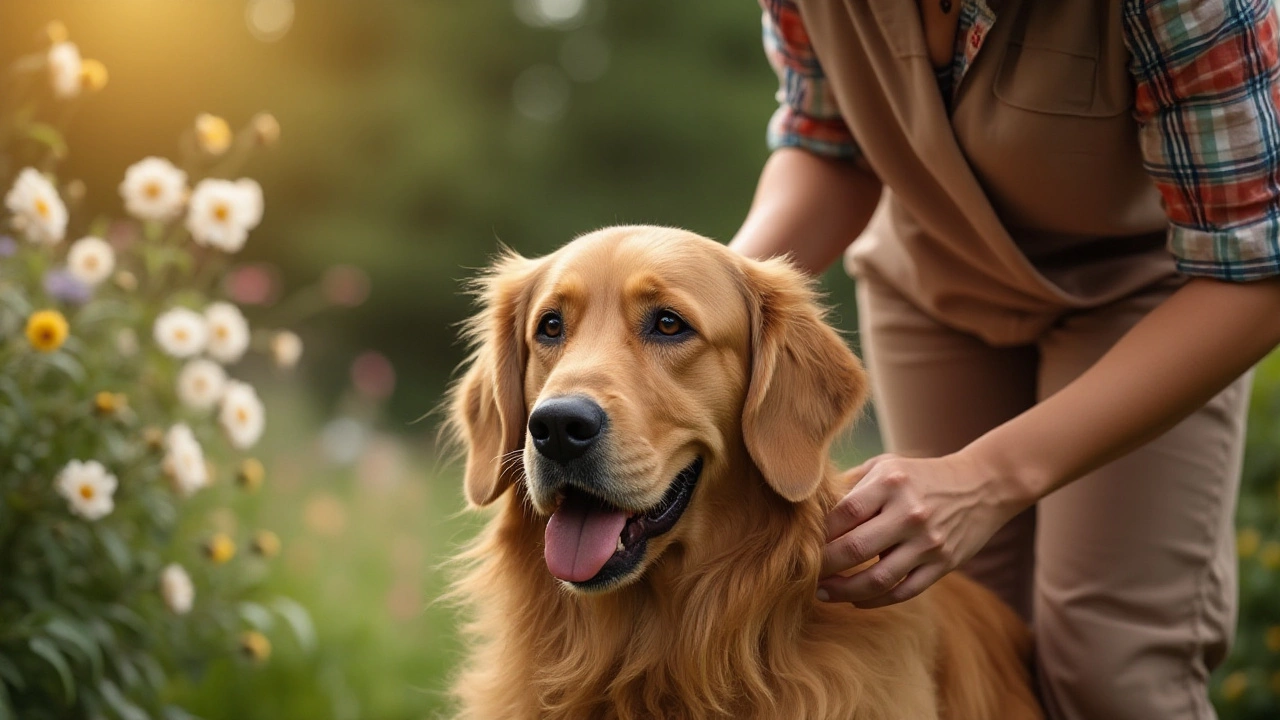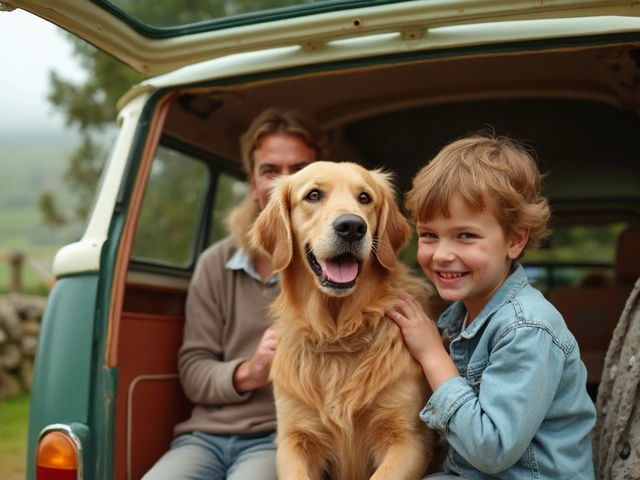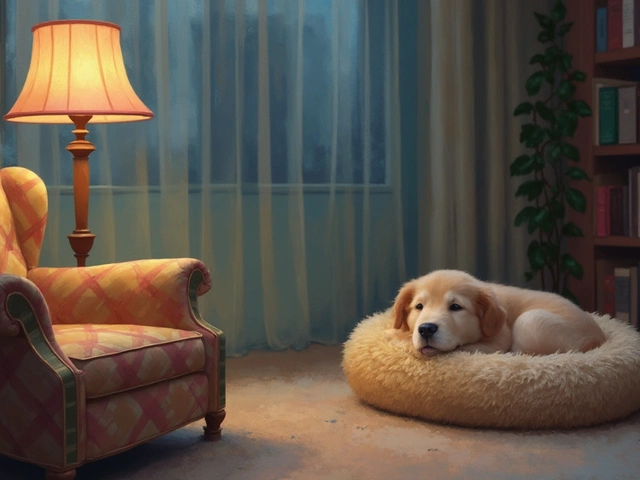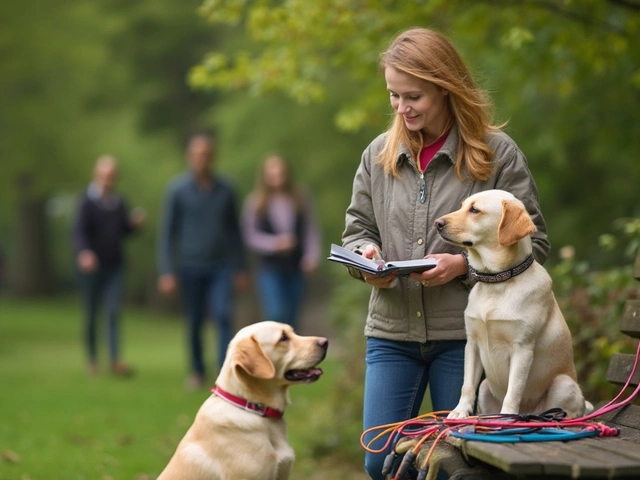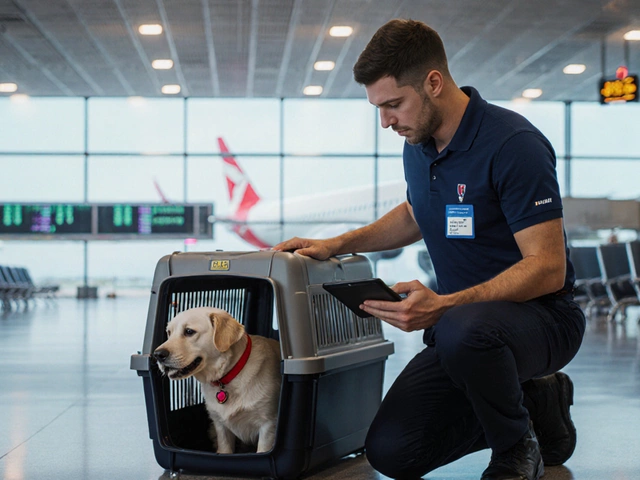When you're a dog parent, one of the essential things to learn is how to keep your canine companion clean and healthy. However, the task of grooming and bathing comes with its own set of questions and challenges. How often does your furry friend need a bath? What tools should you use? Is it better to leave it to the professionals or do it yourself?
Grooming isn't just about appearances; it's a vital part of pet health. Depending on the breed, age, and lifestyle of your dog, grooming needs can vary significantly. Some dogs with thick, lush coats might require more frequent grooming, while others with short hair might be more low-maintenance.
In this guide, we'll delve into the nitty-gritty of dog grooming frequencies, different needs based on breeds, and helpful tips to make the process enjoyable and effective. Whether you're a seasoned pet owner or new to the pack, this article will equip you with everything you need to know for a clean and happy pup.
- Understanding Your Dog's Coat Type
- Breed-Specific Grooming Needs
- Signs Your Dog Needs a Bath
- Essential Grooming Tools
- Tips for Stress-Free Bathing
- Professional Grooming vs. DIY
Understanding Your Dog's Coat Type
Not all dog coats are the same, and each type brings with it a unique set of grooming and bathing requirements. Understanding what kind of coat your dog has is the foundation to ensuring they remain happy and healthy. A dog's coat is more than just fur—it's a sophisticated layer that offers protection, warmth, and even expresses their personality. It’s essential to recognize the differences in coat types, from the sleek, smooth coats of a Greyhound to the thick, double coats of a Siberian Husky. These distinctions are not just superficial; they affect how often your pet needs grooming and bathing.
Smooth Coats
Dogs with smooth coats, such as Boxers and Beagles, have short hair that lies close to the body. This type of coat doesn't tend to get tangled, making grooming relatively simple. However, these dogs can shed often, so regular brushing is recommended to keep shedding under control. Interestingly, dogs with smooth coats may need bathing more often as oils and dirt can build up on their skin quickly.
Double Coats
Double-coated dogs like Retrievers and Shetland Sheepdogs possess a dense undercoat beneath their outer coat. This helps regulate their temperature, protecting them from both heat and cold. Grooming a **double coat** requires more diligence; they shed heavily, especially during seasonal changes, and the undercoat needs to be brushed out to prevent matting. Bathing routines can be less frequent, as their coat naturally repels dirt to some extent, but regular brushing is critical to manage their shedding.
Wire Coats
Breeds with **wire coats** such as Terriers require special attention. Their hair is coarse, resembling bristles, and requires a grooming method called 'hand-stripping,' which involves removing dead hairs by hand. Bathing should be minimal, only when necessary, as water and soap can soften the texture of the coat, negating its purpose.
"Regular grooming habits and knowledge about different dog coat types can drastically improve the quality of your pet's life," says Dr. Emma Green, a prominent veterinarian.
Curly and Wavy Coats
Dogs with curly coats, like Poodles and Bichons, and wavy coats, like Spaniels, need grooming appointments frequently to prevent matting and to keep their coats at a manageable length. These breeds often benefit from professional grooming sessions due to the intricacies of keeping their showers squeaky clean. Regular bathing helps to maintain their natural oils, keeping the coat soft and pleasant to the touch.
Knowing your dog's coat type won't just improve their grooming schedule; it opens the door to understanding their behavior and physical needs. Each coat comes with its own quirks, and respecting these can lead to a happier, healthier life for both dog and owner alike. Remember, get acquainted with your dog's coat, and you're set on a rewarding companionship marked by care, attention, and a bit of fluffy charm.
Breed-Specific Grooming Needs
When it comes to grooming your dog, knowing the unique needs of your dog’s breed can make all the difference. Each breed has its own set of characteristics that dictate how often you should brush their coat, trim their nails, and bathe them. For instance, dogs with long, flowing coats like Afghan Hounds or Shih Tzus require frequent brushing to prevent matting and tangles. These breeds also need regular bathing to keep their coats shiny and clean. On the other hand, short-haired breeds like Beagles or Bulldogs are a bit more low maintenance when it comes to brushing, but they still benefit from regular baths and basic grooming. The density and length of a dog's fur can directly influence their grooming schedule, with thicker coats requiring more frequent attention.
Different breeds may also have specific needs beyond just their coat. Breeds such as the Poodle or Bichon Frise are often kept in specific cuts or styles, which means they may need to see a professional groomer more regularly to maintain that iconic look. In contrast, working breeds like Australian Shepherds might carry more natural oils in their coats, so frequent bathing could strip these essential oils, affecting their skin and coat health. It’s important to consider these unique requirements to ensure proper pet care and to keep your beloved pet healthy and happy. Regular maintenance not only enhances your dog's appearance but contributes to their overall physical health.
Apart from coat characteristics, it's crucial to note that some dog breeds have particular needs when it comes to ear cleaning and dental hygiene. For example, breeds with floppy ears like Spaniels or Bassets might need more regular ear checks and cleaning to prevent infections. Similarly, small breeds like Chihuahuas or Yorkshire Terriers often face dental health challenges and benefit from regular teeth brushing and vet check-ups. A well-rounded grooming routine includes attention to these aspects as well, catering specifically to the needs of your dog's breed to ensure they remain in top health.
"Understanding your pet's specific grooming needs can help shape a more personalized care plan," says Dr. Emily Pierce, a renowned veterinarian specializing in canine health.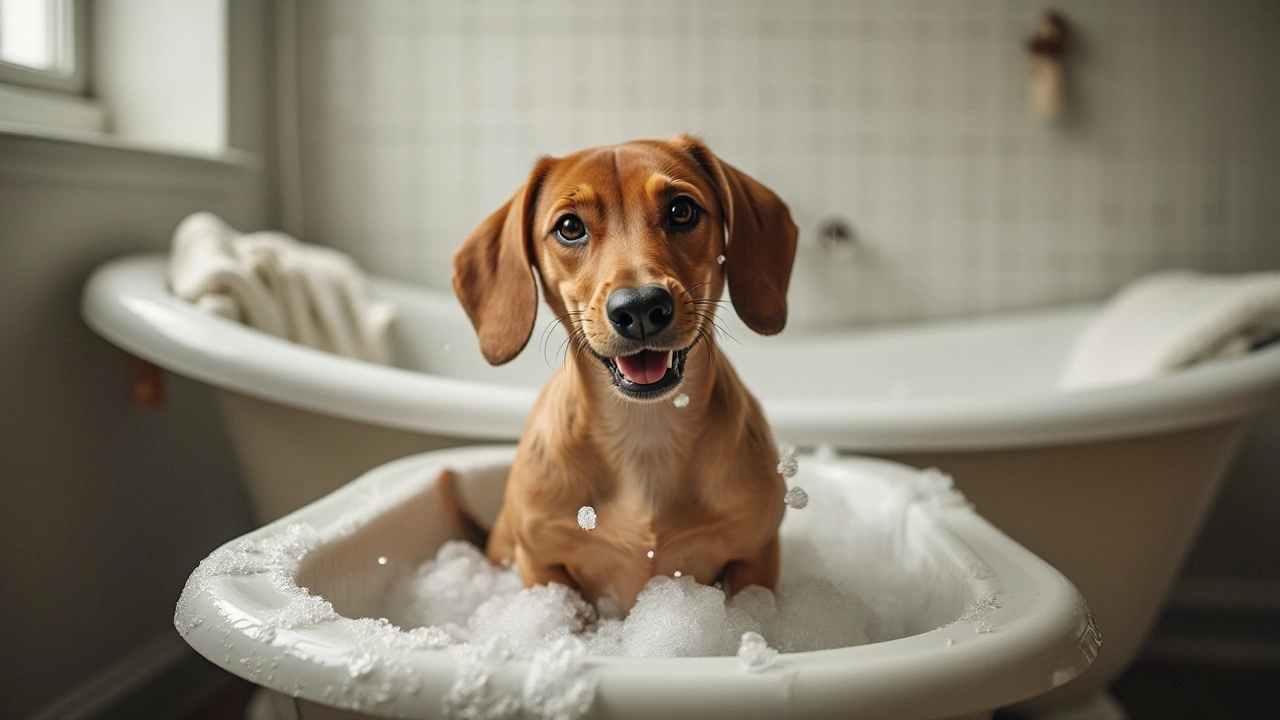
Signs Your Dog Needs a Bath
Deciding when to bathe your beloved canine is an integral part of effective dog grooming. While it's not necessary to bathe your dog on a strict schedule, there are plenty of signs that indicate it's time for some sudsy action. One of the most apparent indicators is the unmistakable smell that can occasionally waft through the house. A dog's natural scent can become pungent, and the accumulation of oils, dirt, and sweat can exacerbate this odor. Pay close attention to your dog's skin and coat, as an oily or greasy appearance often signals the need for a wash.
Another critical sign emerges through your pet's coat condition. Dogs are meant to have a certain shine and resilience to their fur, which can dull over time if not properly maintained. If you notice your dog's coat is looking dull, or if it tangles and mats quickly, a bath might be in order. Knotting fur can actually cause discomfort for your furry friend and even lead to skin irritations. Keep an eye on their behavior, too. If your dog seems itchier than usual or frequently rolls around, trying to scratch spots they can't quite reach, it could mean their coat needs attention.
"Regular grooming, including timely baths, can help prevent many potential health issues,” suggests Dr. Sarah Hattrup, a renowned veterinarian specializing in pet dermatology.Of course, beyond the visible signs, consider your dog’s daily lifestyle with special attention to their level of outdoor activity. A pet that loves splashing through muddy puddles, rolling in wet patches, or frolicking through fields is bound to pick up dirt more rapidly. This, in turn, leads to more frequent baths. Dogs living in urban settings may encounter different pollutants, leading to the need for regular cleansing. Urban dust, pollution, and even exhaust fumes can cling to a pet's fur, making a manageable grooming routine necessary for those city dwellers. Pet care experts often recommend observing your dog's interactions with its environment, as tactile clues can often signal cleanliness needs.
Aside from these common signs, it's also essential to notice if your dog has any skin conditions or allergies, as these can influence the frequency and type of grooming they require. Dogs with sensitive skin may require special dog bathing products to ensure their skin remains healthy and irritation-free. This often demands a more careful, perhaps even more frequent, grooming regimen. Surprisingly, adult dogs, especially those that use social signals like scent to interact with other dogs, may need baths more often after encountering other pets. A sudden increase in fellow canine visitors can amplify the need for bathing, maintaining optimal hygiene.
In determining the right moment for a bath, it's beneficial to have a checklist that can guide you. Include simple items such as assessing the scent, coat appearance, and any visible signs of discomfort. If a grooming session feels necessary, take action without hesitation. By staying attuned to these signs, you will not only enhance your dog's wellbeing but also enjoy snuggle time without the worry of offending aromas.
Essential Grooming Tools
Having a happy and healthy dog often starts with having the right grooming tools at your disposal. Just like a chef needs their trusty set of knives, a dog owner should have a well-stocked grooming kit. The assortment of tools you'll need largely depends on your dog's breed and coat type, as each has unique requirements that can make a significant difference in their care routine.
Among the most vital tools is a reliable brush. The type of brush—be it a slicker, bristle, or pin brush—should match your dog's fur. For instance, slicker brushes, with their fine wire bristles, are excellent for detangling mats in long-haired breeds, while bristle brushes are great for short-haired pets to remove loose hair and stimulate the skin's natural oils. Pin brushes, resembling human hairbrushes, work well on most hair types, helping to keep the coat clean and glossy.
A good pair of grooming scissors or clippers is also crucial for maintaining your dog's coat's length and tidiness. When choosing clippers, look for ones designed with quiet motors to avoid startling your dog. If you're trimming nails, opt for sturdy nail clippers with a built-in guard to prevent overcutting. An investment in quality tools can transform grooming from a chore into a bonding experience.
"A proper grooming routine ensures that your pet's skin, coat, paws, and ears stay healthy and clean," says Dr. Jane Williams, a veterinarian at the Animal Health Institute. "Attention to hygiene can prevent many common ailments."Additionally, a veterinarian-approved shampoo and conditioner for your pet's bath times can help maintain coat health. Human shampoos are a no-go due to different pH levels, which can irritate your dog’s skin. Choose a product based on your dog's skin sensitivities and specific conditions, if any, like flea prevention or skin allergies.
Be aware that grooming is not just about the coat; dental hygiene is just as crucial. Incorporate regular teeth cleaning with dog-safe toothpaste to prevent plaque build-up and foul breath. Keep ear cleaning solutions handy as well, particularly for breeds prone to ear infections. And let’s not forget the importance of a good-quality pet towel for drying after baths, minimizing the chances of the 'runaway shake' in your living room, and keeping your pet warm.
For those new to pet ownership, it can be tempting to skimp on grooming supplies, but remember that quality tools last longer and work more effectively, saving you time and potential discomfort for your pet. A well-prepared grooming kit can make all the difference between a stressful grooming session and a peaceful spa day for your dog, ensuring their coat remains as radiant and lively as their personality.
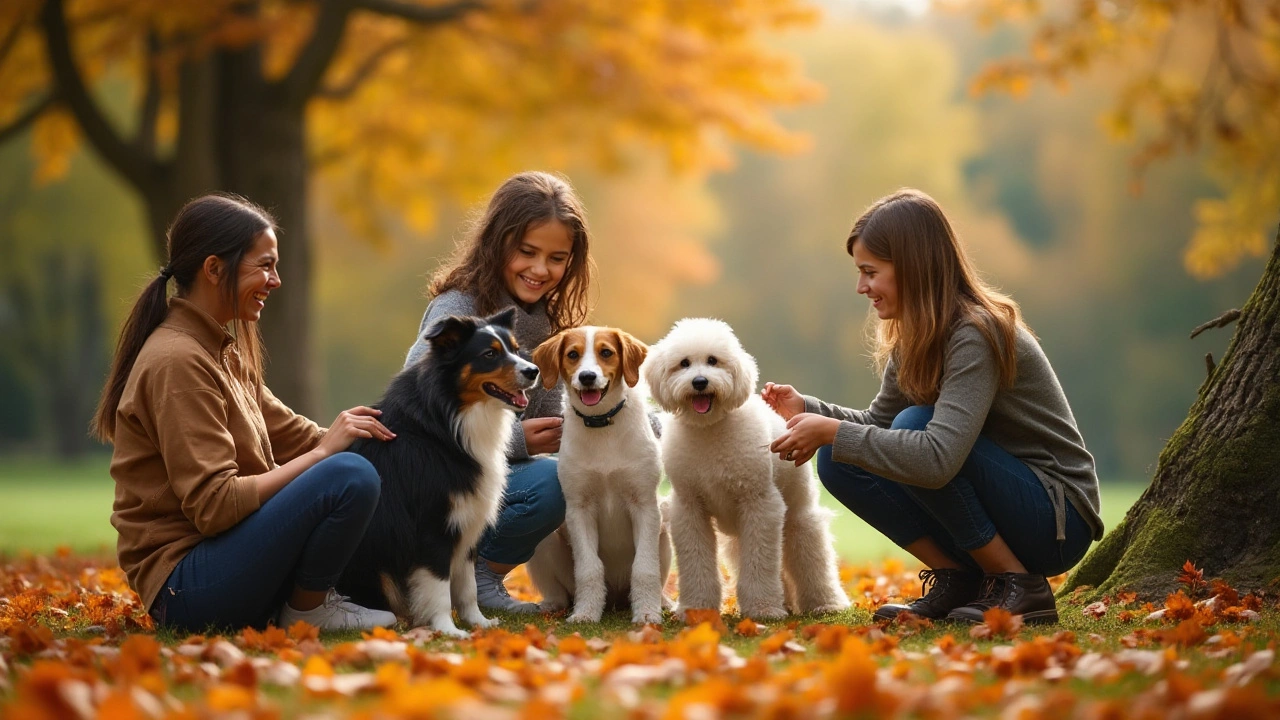
Tips for Stress-Free Bathing
Bath time can be a daunting experience for both you and your dog, especially if your furry friend isn’t particularly fond of water. However, with a few simple strategies and some patience, you can turn this necessary chore into a pleasant routine. First of all, it's crucial to start your bathing regime on a positive note, and it’s never too early or too late to get started. If you have a puppy, introducing them to water in a gentle manner can help them grow accustomed to regular baths, making it a less stressful experience in adulthood. Remember, dogs can pick up on your emotions, so the calmer you are, the more relaxed they'll be.
One of the keys to a successful and stress-free bath is preparation. Make sure you have everything you need within arm’s reach before starting, so you can keep your attention focused on your dog. This includes a mild dog shampoo, a jug or sprayer for rinsing, and towels for drying. If your dog tends to get nervous, try playing music that you know has a calming effect on them, or keep some treats handy to reward good behavior. Some dog owners have found that adding a tasty distraction, like a smear of peanut butter on the wall of the bath or shower, can work wonders.
Temperature plays a significant role in your dog's comfort during bath time. A warm and inviting water temperature—not too hot or cold—can make all the difference. An ideal temperature is around what you would use for a baby. Before you start, test the water to ensure it’s comfortable. Moreover, always reassure your dog with a calm voice throughout the process. A simple method of easing their anxiety is to talk in a soothing, upbeat tone.
Keeping the environment safe and secure is another top priority. Ensure that the basin or tub is slip-proof to prevent your dog from skidding. You can use a rubber mat to provide better footing. During the rinse phase, be conscious of avoiding your dog’s ears, eyes, and nose, as soap residue can cause irritation. You might consider dedicating a special spray nozzle just for them, to make the rinse process smoother and less alarming for your pet. Take care to avoid splashing water too vigorously, as this might startle them. Instead, pour gently, speaking softly to keep them at ease.
Also, think about the drying process. Towels are your best friend at this stage. While some dog owners choose to use a blow dryer, it's important to ensure it is set to a cool or low setting to not frighten or burn your dog's sensitive skin. If your dog seems particularly anxious around dryers, lay out a few extra towels and allow them to dry naturally in a warm, draft-free room where they feel comfortable.
Finally, patience is absolutely vital. Be mindful of your dog’s body language; if they seem overly stressed, pause and advocate for a break. Encourage them with plenty of praise and affection for their bravery.
As renowned dog behaviorist Cesar Millan puts it, "Dogs require our calm energy. They need to associate bathing with safety and love." Following this advice can help make bath time an event your dog doesn't dread.Professional Grooming vs. DIY
One of the questions that dog owners often ponder is whether to take their dog to a professional groomer or tackle grooming tasks at home. Each option has its advantages, and the decision often depends on personal circumstances such as time, budget, and the specific needs of your furry friend. Professional dog grooming can offer the expertise and tools to handle a variety of breeds and coat types, ensuring your dog looks their best without you having to lift a finger. Many groomers are trained to spot potential health issues like skin infections, ear problems, and parasites—a significant plus if you're not well-versed in these areas.
"A professional groomer can make a world of difference," says Dr. Sarah White, a renowned veterinarian. "They not only give your pet a clean and tidy appearance but also can identify health issues that might not be visible to the untrained eye."On the other hand, DIY grooming offers a bonding experience that many pet owners cherish. It allows you to spend quality time with your dog, which can strengthen the bond between you. DIY grooming is often less expensive and can be more convenient if your schedule is tight. However, you will need to invest in the right tools, like brushes and pet care shampoos, and dedicate time to learning the proper techniques for your dog's specific coat type.
In terms of costs, professional services vary widely based on the size of the pet, breed, and location. While a professional session might include nail trimming, ear cleaning, and a stylish haircut, these treatments can add up, especially if your pet requires more frequent grooming. On the flip side, home grooming can save money in the long run, but it is essential to learn the correct methods to prevent any inadvertent harm to your dog.
Consider the breed of your dog as well. Some breeds like Poodles, with their curly coats, demand more meticulous care, which can be better achieved through professional grooming. In contrast, short-haired breeds like Beagles might not require professional assistance as often. There's no one-size-fits-all solution; it's more about what aligns with your and your pet's lifestyle.
Here’s a quick comparison:
- Professional Grooming: Offers expert care, saves time, identifies health issues early, but can be costly regularly.
- DIY Grooming: Cost-effective, builds closer relationships, flexible scheduling, but requires investment in tools and learning proper techniques.
Ultimately, the choice between professional grooming and DIY largely depends on your comfort level, resources, and your dog's individual needs. Many owners find a mix of both approaches to be optimal, relying on professionals for trims and nail care, while maintaining their pup's cleanliness at home.

